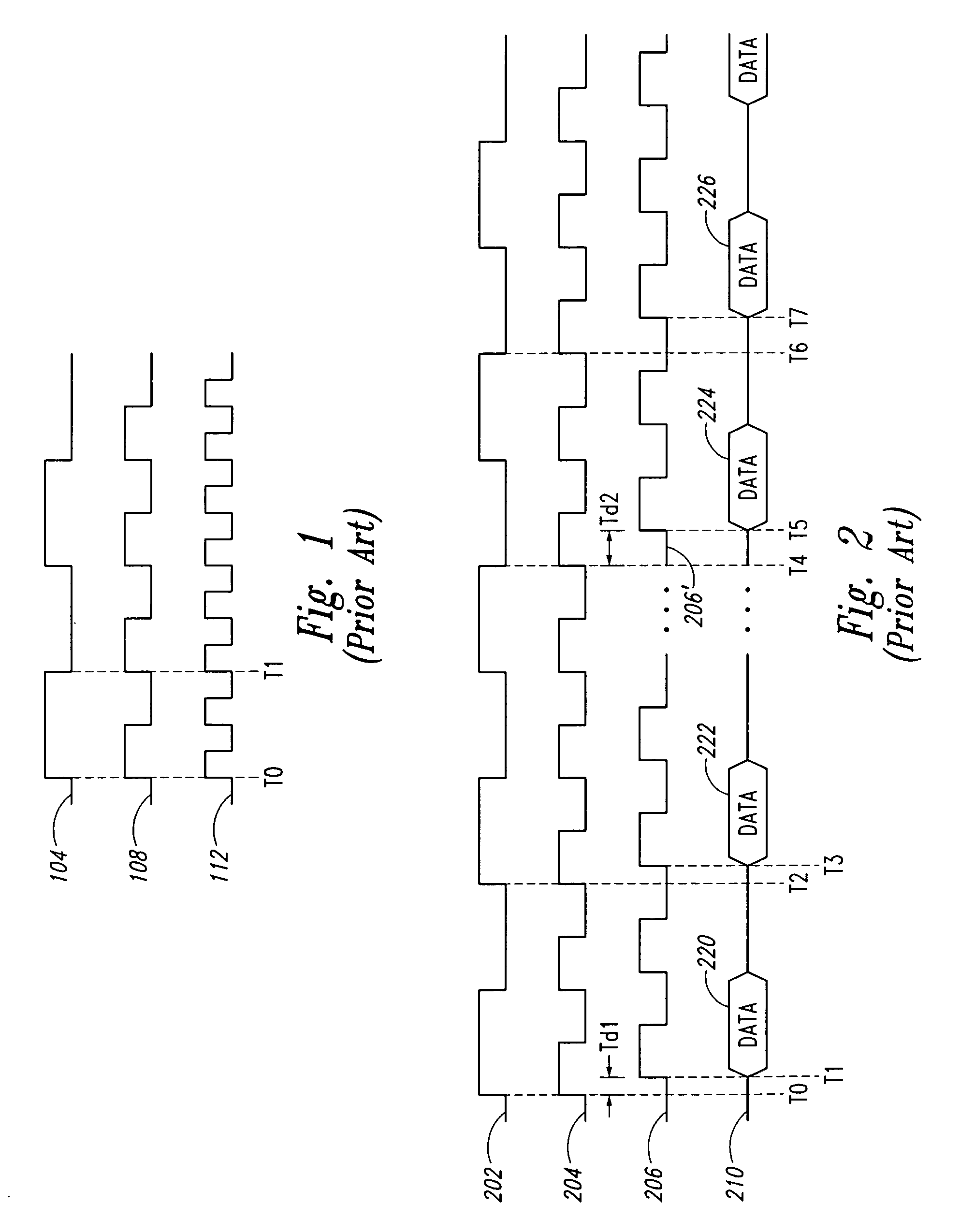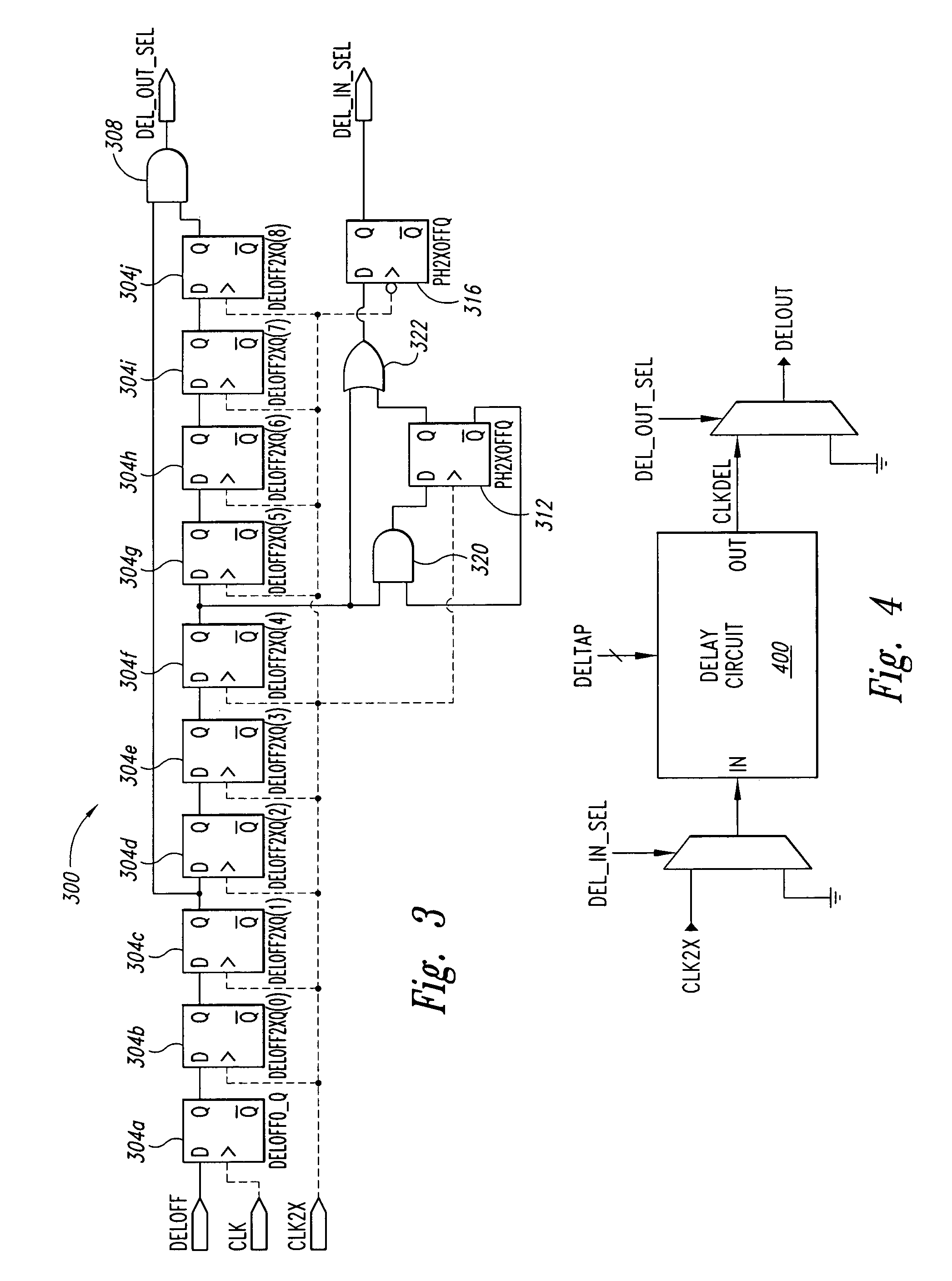Delay line synchronizer apparatus and method
a synchronizer and delay line technology, applied in the direction of generating/distributing signals, pulse techniques, instruments, etc., can solve the problems of different time delays, line loading problems, propagation delays,
- Summary
- Abstract
- Description
- Claims
- Application Information
AI Technical Summary
Problems solved by technology
Method used
Image
Examples
Embodiment Construction
[0020]FIG. 3 illustrates a synchronizer circuit 300 according to an embodiment of the present invention. As will be described in greater detail below, the synchronizer circuit 300 can be used with a conventional adjustable delay circuit to preserve a pseudo-synchronous phase relationship between clock signals of different clock domains when the time delay of the adjustable delay circuit from which one of the clock signals is output is changed. Certain details are set forth below to provide a sufficient understanding of the invention. However, it will be clear to one skilled in the art that the invention may be practiced without these particular details. In other instances, well-known circuits, control signals, and timing protocols have not been shown in detail in order to avoid unnecessarily obscuring the invention.
[0021]The synchronizer circuit 300 includes a plurality of series connected positive edge triggered D flip-flops 304a–j. The first flip-flop 304a is coupled to receive a ...
PUM
 Login to View More
Login to View More Abstract
Description
Claims
Application Information
 Login to View More
Login to View More - R&D
- Intellectual Property
- Life Sciences
- Materials
- Tech Scout
- Unparalleled Data Quality
- Higher Quality Content
- 60% Fewer Hallucinations
Browse by: Latest US Patents, China's latest patents, Technical Efficacy Thesaurus, Application Domain, Technology Topic, Popular Technical Reports.
© 2025 PatSnap. All rights reserved.Legal|Privacy policy|Modern Slavery Act Transparency Statement|Sitemap|About US| Contact US: help@patsnap.com



